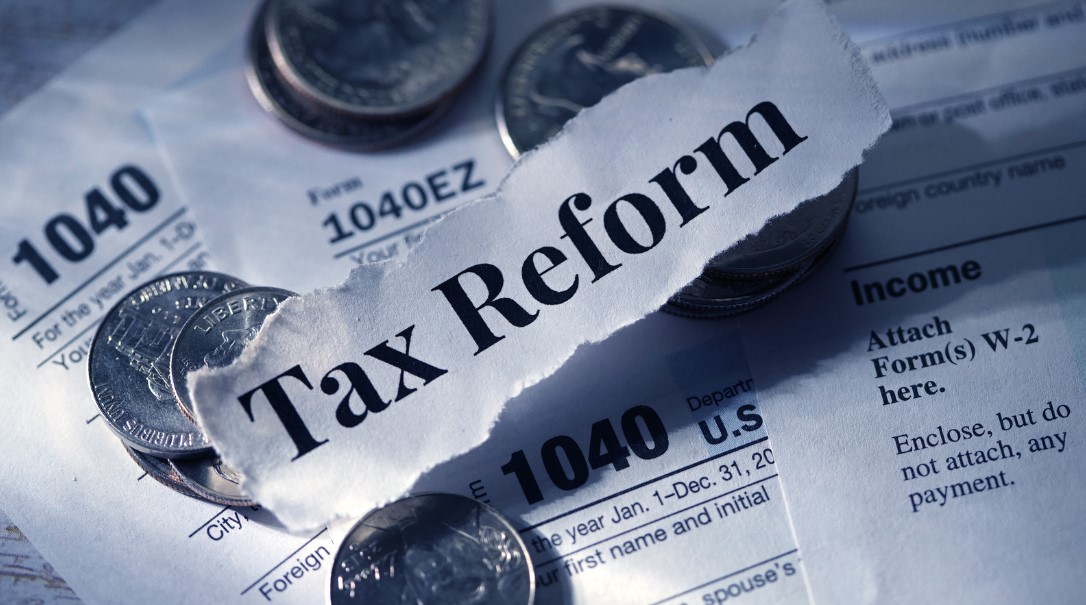The basis period reform represents a significant change in how unincorporated businesses, such as sole traders and partnerships, calculate their trading profits for income tax purposes. It aims to simplify taxation and align tax years for efficient accounting practices. This reform is important for small businesses as it impacts how they determine their taxable profits and ensures a fair and consistent taxation system.
Basics of Basis Period Reform
The basis period reform introduces a new “tax year basis” for assessing the trading profits of unincorporated businesses. From 6 April 2024, businesses will be taxed on the profits arising in each tax year, regardless of their accounting period end date. This replaces the “current year” basis, which calculates tax using the profits of the accounting period ending in that year. The reform breaks the link between the chosen accounting date and the taxation of profits.
The tax year basis simplifies the tax calculation process for unincorporated businesses by aligning it with the standard tax year. It eliminates the need for businesses to use their accounting period end dates to determine their taxable income, providing a more consistent and fair system.
Under the previous current year basis, businesses had to align their accounting year-end with the tax year. This meant that businesses with non-standard accounting periods often had to apply complex adjustments to determine their taxable profits. The basis period reform removes this requirement, allowing businesses to choose any accounting period end date without affecting their tax liability.
This reform provides unincorporated businesses with greater flexibility in choosing their accounting period end date. They can now select an accounting date that best suits their operational needs, ensuring that their financial statements accurately reflect their business performance. This flexibility also allows businesses to adopt accounting practices that align with industry standards and regulatory requirements.
Furthermore, the tax year basis simplifies the recordkeeping process for businesses. They no longer have to maintain multiple sets of accounts for different purposes, as their tax calculations are based on the profits arising within the tax year. This streamlines the accounting and reporting process, reducing the administrative burden for small businesses.
The change to the tax year basis introduces a more consistent and standardized approach to taxation for unincorporated businesses. It aligns with the broader goal of modernizing and digitalizing the UK tax system, making it more efficient and accessible for taxpayers.
The transition to the tax year basis will require businesses to adapt their accounting and tax practices. However, the benefits of this reform, including simplified tax calculations and increased flexibility, make it a positive change for unincorporated businesses.
Overview of the Basics of Basis Period Reform:
- The basis period reform introduces the “tax year basis” for assessing trading profits.
- Businesses will be taxed on the profits arising in each tax year, regardless of their accounting period end date.
- The reform replaces the previous “current year” basis, which linked tax calculations to the accounting period ending in that year.
- This change simplifies tax calculations and provides greater flexibility in choosing the accounting period end date.
- The tax year basis aligns with industry standards and regulatory requirements, simplifying recordkeeping and reporting.
- The reform supports the modernization and digitalization of the UK tax system.
| Previous Basis | New Basis |
|---|---|
| Current Year Basis | Tax Year Basis |
| Tax calculations based on accounting period ending in the year | Tax calculations based on profits arising in the tax year |
| Accounting period end date linked to tax liability | Accounting period end date no longer affects tax liability |
| Complex adjustments for businesses with non-standard accounting periods | Flexibility to choose any accounting period end date |
| Multiple sets of accounts for different purposes | One set of accounts based on tax year profits |
Who is Affected by Basis Period Reform?
The basis period reform primarily impacts unincorporated businesses subject to income tax, including sole traders and individual partners in partnerships. These businesses will need to adapt their accounting practices to comply with the new regulations. However, limited companies, which are subject to corporation tax rules, remain unaffected by the basis period reform.
Furthermore, businesses with accounting periods ending between 31 March and 5 April are not impacted by the reform. This is because they can treat their accounting period as the same as the tax year, simplifying their taxation process. Additionally, property income, which is already reported on a tax year basis, should not significantly be affected by the basis period reform.
Overall, the basis period reform targets specific types of unincorporated businesses, ensuring a fair and consistent taxation system while minimizing disruption to other entities.
How Does the Tax Year Basis Work?
Under the tax year basis, businesses are subject to tax on their profits arising in the tax year from 6 April to the following 5 April. This shift to a tax year basis aims to align taxation with the calendar year, simplifying the calculation of taxable profits for unincorporated businesses.
If a business’s accounting period aligns with the tax year, calculating taxable profits is straightforward. However, if the accounting period differs from the tax year, businesses are required to apportion amounts from two sets of accounts.
The apportionment…
Transitional Year – 2023/24
The tax year 2023/24 marks a significant transitional period for the basis period reform. During this year, businesses will undergo taxation based on two distinct parts of their profits: the “standard part” and the “transition part.”
The standard part pertains to the profits that would have been subject to taxation under the previous current year basis. It allows businesses to maintain consistency with the previous tax system while adjusting to the new reforms.
On the other hand, the transition part covers the time period extending from the end of the standard part to 5 April 2024. Businesses will need to manage the impact of the additional profits generated during this period.
For businesses affected by the basis period reform, there are mechanisms in place to alleviate the burden of the transition part. By utilizing overlap relief, businesses can deduct any overlapping profits and spread the remaining transition profits over a span of up to five years. This spreading mechanism aims to support businesses in managing their tax obligations during this transitional phase.
Overall, the transitional year of 2023/24 provides businesses with a necessary adjustment period to adapt to the new basis period reform. By implementing the standard part and transition part, businesses can maintain consistency while effectively managing profits and ensuring a smooth transition into the reformed taxation system.

Summary:
- The transitional year 2023/24 is a crucial period for businesses to adapt to the basis period reform.
- The standard part represents profits taxed under the previous current year basis.
- The transition part covers profits generated from the end of the standard part until 5 April 2024.
- Businesses can utilize overlap relief to deduct overlapping profits and spread transition profits over up to five years.
- This transitional mechanism aims to ease the impact of the reform and support businesses during the period of change.
Calculating Profits Under the Tax Year Basis
Under the tax year basis, businesses need to calculate their profits by apportioning amounts from two sets of accounts if their accounting period does not align with the tax year. This apportionment ensures that the taxable profits are based on the relevant proportion of profit from each set of accounts.
The apportionment is generally done on a day basis, taking into account the tax adjusted profit/loss. This involves adjusting for non-deductible expenses and capital allowances to arrive at the tax-adjusted profit or loss for each set of accounts.
If the second set of accounts is not ready in time for filing the tax return, businesses can estimate the figures and file a provisional return. The use of provisional figures safeguards against any penalties and ensures that reasonable and accurate figures are submitted. It’s important to maintain proper recordkeeping for the estimated figures until the final accounts are available.
Provisional figures can be corrected at any time up to the normal amendment deadline. Once the final figures are ready, they can be included in an amended return to reflect the accurate profits for the tax year.
It’s crucial for businesses to carefully calculate their profits under the tax year basis, ensuring accurate apportionment, and consideration of tax adjustments. Utilizing provisional figures when necessary, businesses can meet their filing obligations while allowing for updates and corrections to the tax return.

| Key Steps | Actions |
|---|---|
| 1. Determine accounting period end date | Identify the specific accounting period end date for each set of accounts. |
| 2. Calculate tax adjusted profit/loss | Adjust the profit or loss of each set of accounts by considering non-deductible expenses and capital allowances. |
| 3. Apportion profits/losses | Allocate the relevant proportion of profit or loss from each set of accounts to the tax year. |
| 4. Account for provisional figures | If the second set of accounts is not ready, estimate and file a provisional return. |
| 5. Maintain accurate records | Record and retain all calculations, estimates, and provisional figures for future reference. |
| 6. Submit an amendment if necessary | When the final figures are available, include them in an amended return to reflect the accurate profits for the tax year. |
Practicalities of Basis Period Reform
Under the basis period reform, filing and payment dates for income tax self-assessment returns remain unchanged. Businesses are still required to meet their respective deadlines for submitting their tax returns and making payments.
It’s important to note that the basis period reform does not impose a specific requirement for businesses to draw up their accounts specifically to 31 March or 5 April. However, businesses with different accounting period end dates may need to do some additional work to align their accounting practices with the tax year basis.
While businesses have the flexibility to choose any accounting date they prefer, aligning their accounting period with the tax year can simplify the process of preparing self-assessment returns. This alignment can streamline the calculation of taxable profits and minimize the need for complex apportionment calculations.
Benefits of aligning with the tax year:
- Simplified accounting and reporting
- Easy comparison of financial data across tax years
- Efficient tax planning and management
- Minimized complexity in apportionment calculations
Overall, the practicalities of the basis period reform revolve around ensuring accurate reporting and compliance with existing filing and payment requirements. By aligning accounting practices with the tax year basis, businesses can streamline their financial processes and ensure a smooth transition to the new system.
For reference, here’s an illustrative table showcasing the filing and payment deadlines for self-assessment tax returns under the basis period reform:
| Tax Year | Accounting Period End Date | Filing Deadline | Payment Deadline |
|———-|—————————|—————-|——————|
| 2022/23 | 31 December 2022 | 31 January 2024 | 31 January 2024 |
| 2023/24 | 30 June 2023 | 31 January 2025 | 31 January 2025 |
| 2024/25 | 5 April 2024 | 31 January 2026 | 31 January 2026 |
As depicted in the table, businesses with different accounting period end dates need to ensure their filing and payment dates align with the corresponding tax years to comply with the basis period reform.

Conclusion
The basis period reform has significant implications for small businesses, simplifying taxation and aligning tax years for efficient accounting practices. By moving to a tax year basis, unincorporated businesses can better manage their taxable profits and have greater control over their tax planning. The reform aims to reduce tax liability mismatches, provide clarity and consistency in taxation, and align with the ongoing digitalization of the tax system. Planning ahead and understanding the implications of the basis period reform is crucial for the financial management of small businesses.





